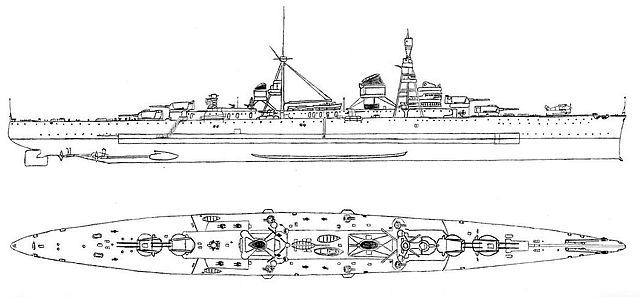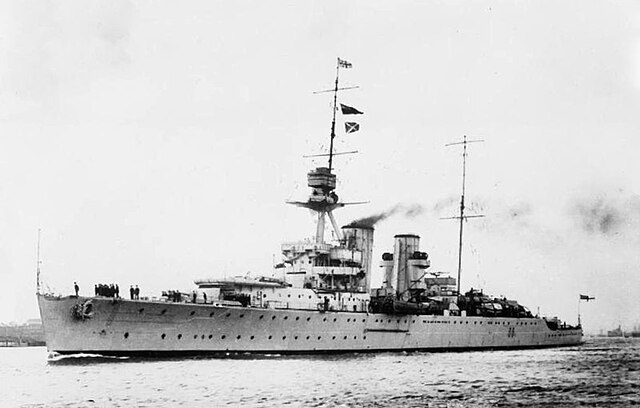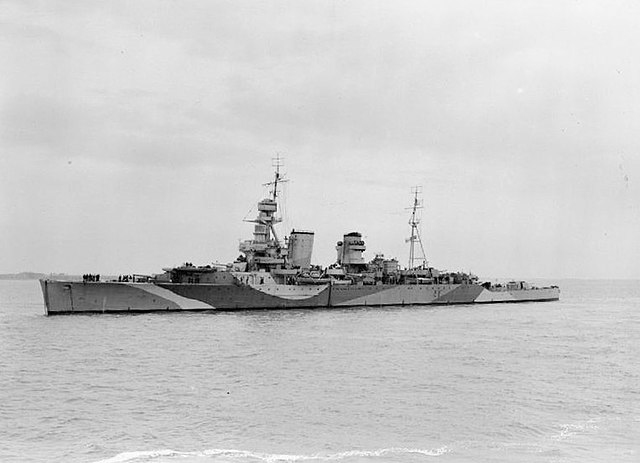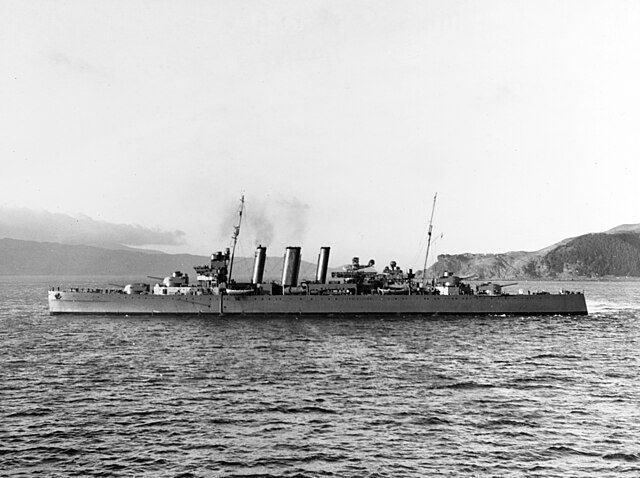The Trento class was a group of two heavy cruisers built for the Italian Regia Marina in the late 1920s, the first such vessels built for the Italian fleet. The two ships in the class—Trento and Trieste, were named after the redeemed cities of Trento and Trieste annexed from the Austro-Hungarian empire after the victory in World War I. The ships were very lightly armored, with only a 70 mm (2.8 in) thick armored belt, though they possessed a high speed and heavy main battery of eight 203 mm (8 in) guns. Nominally built under the restrictions of the Washington Naval Treaty, the two cruisers nevertheless exceeded the displacement limits imposed by the treaty.
Trento early in her career
Plan and profile drawing of the Trento class
Bow view of Trento; note the very close mounting of the turret guns
Trieste in 1930
A heavy cruiser was a type of cruiser, a naval warship designed for long range and high speed, armed generally with naval guns of roughly 203 mm (8 inches) in calibre, whose design parameters were dictated by the Washington Naval Treaty of 1922 and the London Naval Treaty of 1930. Heavy cruisers were generally larger, more heavily-armed and more heavily-armoured than light cruisers while being smaller, faster, and more lightly-armed and armoured than battlecruisers and battleships. Heavy cruisers were assigned a variety of roles ranging from commerce raiding to serving as 'cruiser-killers,' i.e. hunting and destroying similarly-sized ships
HMS Frobisher, a Hawkins-class cruiser around which the Washington Naval Treaty limits for heavy cruisers were written.
Armoured cruiser USS Tennessee, armed with four 10-inch (250 mm) guns, ca. 1907
HMS Hawkins, lead ship of her class.
HMAS Canberra, a County-class "treaty cruiser".








